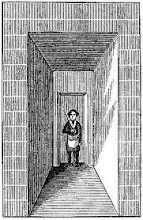MW Santiago T. Gabionza Jr.
Centennial Grand Master
Biographical Sketch
Education.
He graduated Second Honorable Mention from the Bato Central Elementary School, Catanduanes, in 1969; Salutatorian, from the Catanduanes Institute in 1973. He obtained the degree of AB-Economics from Colegio de San Juan Letran, graduating therefrom as Summa cum Laude. He got Second Honors or Silver Medal when he finished his studies leading to the degree of Bachelor of Laws at the Ateneo de Manila University in 1981.
Previous Work Experience:
- He was College Instructor in Catanduanes Colleges(1977);
- Director/Corporate Secretary of both AEON Inc. and ARMPHIL Inc. (1982);
- Senior Associate in De Santos, Balgos & Perez Law Office (1982-1990);
- Reviewer on Business Law, AEON Review Dorm (1983-87);
- Asst. Corporate Secretary, Omico Mining and Industrial Corporation (1988);
- Vice-Chairman, Board of Directors, Manila City Bus Corporation (1990);
- Managing Partner, Villanueva, Bernardo & Gabionza Law Offices (1991-2001);
- President and Member, Board of Directors, Northern Power Development, Inc (1998);
- Corporate Secretary, Binga Hydro electronic Plant, Inc. (1998);
- Member, Board of Directors/Corporate Secretary, Algena Fashion and Garments, Inc. (2005);
- ASM Trading Counter Corp. (2005);
- People’s Independent Media, Inc. (2005);
- Monica Publishing Corp. (2005);
- OIC-President, Maynilad Water Services, Inc. (2006);
- Consultant, Committee on Justice. House of Representatives, Congress of the Republic of the Philippines (2006-07);
- Consultant to the Secretary of the Departmentof National Defense (2007).









